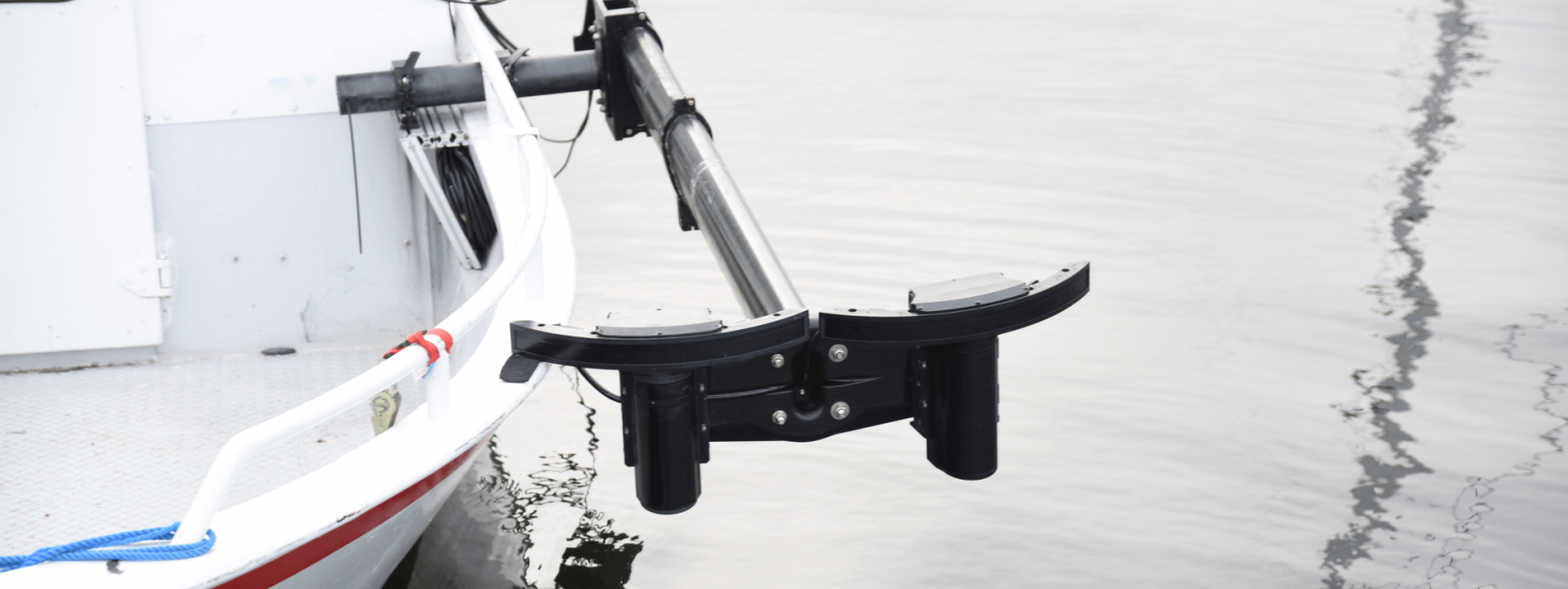Over the past decade, the hydrographic survey community has benefited greatly from portable multibeam echosounders utilizing highly integrated electronics and powerful computational platforms. These sonar systems are smaller than their predecessors yet provide more computational power and functionality. The more compact system size allows users and manufacturers to combine multiple sensors to obtain the highest resolution, maximum number of beams and resulting sounding density while keeping the weight down for portability advantages. This article presents a dual-head system based on Norbit Winghead sonars.
(This article is brought to you by Norbit)
Dual-head multibeam installations have been used in the industry by professional users to maximize survey productivity. For example, in shallow waters they are used to increase of the field of view, in deeper waters to increase the sounding density, and in ROV pipeline tracking to increase the observable pipe surface and avoid shadows. The physical installation of the sonar heads traditionally differs in these cases, especially when it comes to the selection of tasks to increase the maximal across-track coverage or sounding density – both of which are used depending on the objectives that need to be met.
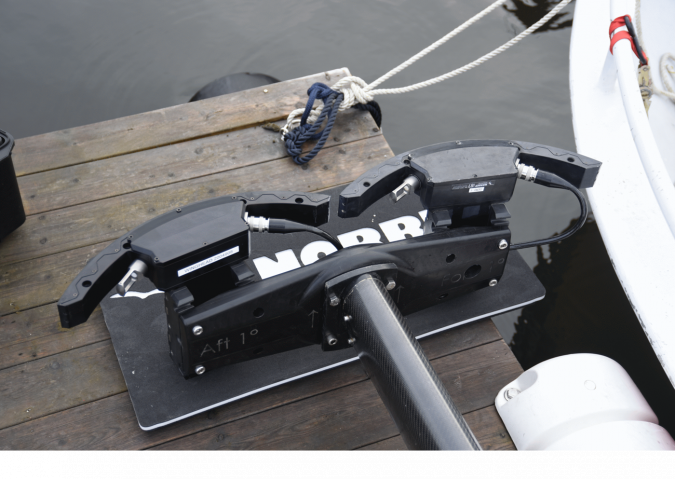
Increased coverage and sounding density
To increase the observable across-track coverage, the heads are tilted outwards to ensonify a wider sector of view. On the other hand, to increase along-track sounding density in the given across-track sector, more along-track soundings need to be produced by pinging in slightly different directions. The Norbit Winghead cylindrical array supports these two objectives with a single installation. The user can take advantage of 1,024 true dynamically focused beams formed for each head and ultra-wide 210-degree sector coverage. These important properties of the Winghead sonars allow the user to utilize a single, specially designed bracket which accommodates two use cases without the need to reconfigure the physical installation.
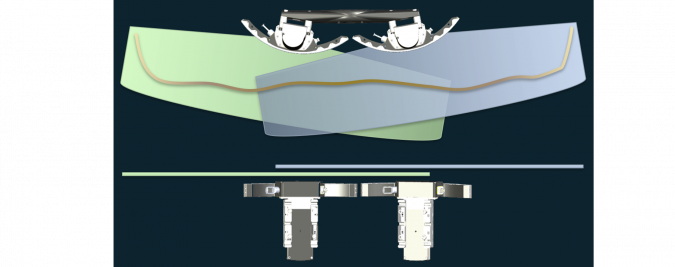
The bracket is designed such that the port head is tilted ten degrees towards port and the starboard head is tilted ten degrees towards starboard. At the same time, each head is pitched by one degree aft and forward respectively, which ensures that a different part of the bottom is ensonified by each head (statistically independent reverberation area). Since the heads are electronically synchronized and they ping at the same time, the instantaneous increase of survey sounding density along track is achieved.
Configuring the overlap
The overlap in across-track direction is configured from the Norbit user interface and can vary between 0% and 100%. At 0% there will be no overlap between the heads and at 100% the across-track sector will be identical for both heads (see the examples for 100% overlap and 20% overlap).
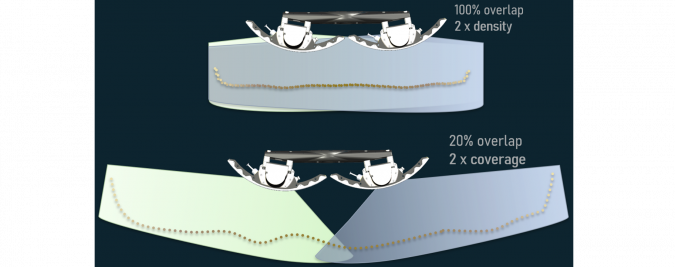
With the 100% overlap, two swaths cover identical across-track regions, but the along-track regions are different because of the approximately one-degree pitch offset between the heads. This means that the actual soundings cover twice the area, resulting in double the survey efficiency. Each head produces 1,024 soundings, amounting to a total of 2,048 points per ping when operating at full ping rate. The small overlap, for example 5%-20%, forces the soundings to be spread over a wider area. With still 2,048 soundings per ping, the wide sector is sampled with great density, increasing the survey performance as required.
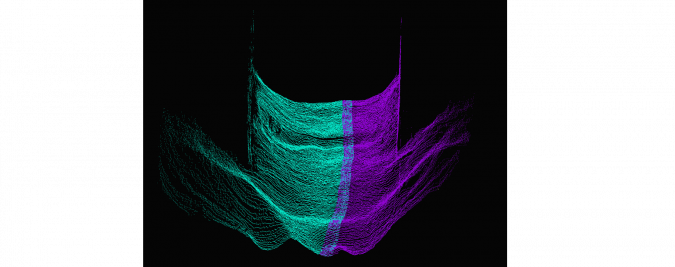
In Figure 4, tunnel walls were surveyed with a small overlap of approximately 5% which allowed survey from bank to bank, with 2,048 beams covering the 180-degree sector in great detail.
Pitch dynamics
The along-track increase in sounding density can be useful on highly dynamic platforms where the pitch dynamics become a problem. If the pitch of the vessel changes rapidly, there could be gaps observed with the standard single swath installation. A similar problem occurs when double ping density is required compared to a single system. This issue can be mitigated when the dual-head installation is used with the outlined bracket with small tilt between the two heads. The Norbit bracket has an approximately one-degree offset between the heads, thus allowing each head to ensonify slightly different areas on the bottom.

Figure 5 shows the sounding density during a survey in rough seas done using the Norbit dual-head system with and without pitch offset applied to the heads. For the visualization purposes, the processing software was set to remove the approx. one-degree offset in order to clearly show the difference.
approx. one-degree offset applied and they fall almost on top of each other. It shows some gaps and despite the large number of points there are still some holidays. However, when the proper pitch offset is applied (right-hand side) the gaps have clearly been filled up with the data and holidays are much less visible.
Conclusions
The Winghead dual-head configuration offers multiple advantages for bathymetric surveys. The user can benefit from 1,024 true soundings for each of the Norbit Winghead multibeam echosounders and use each one differently, either to extend the visible sector or to increase the along-track sounding density. In both cases, the single bracket with approx. ten-degree across-track and approx. one-degree along-track offset allows the utilization of the wide-swath operation of the Norbit Winghead sonar system without any physical modifications to the bracket.


